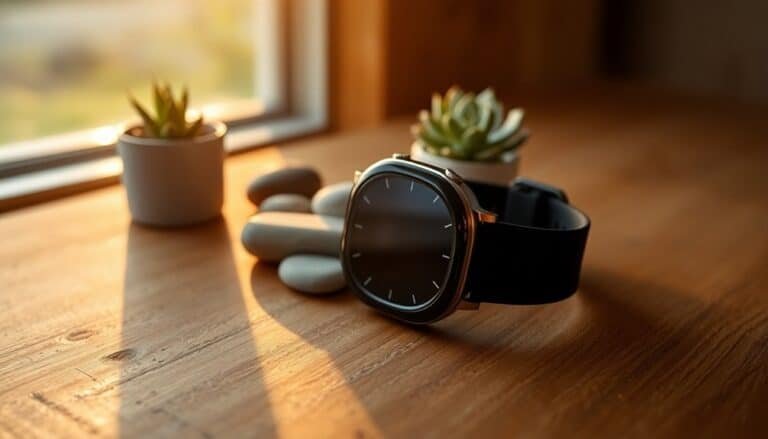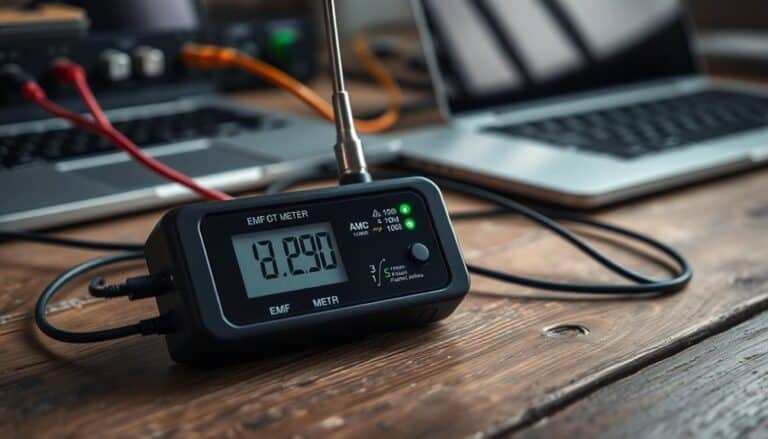Blue Light Vs EMF: Different Effects on Health
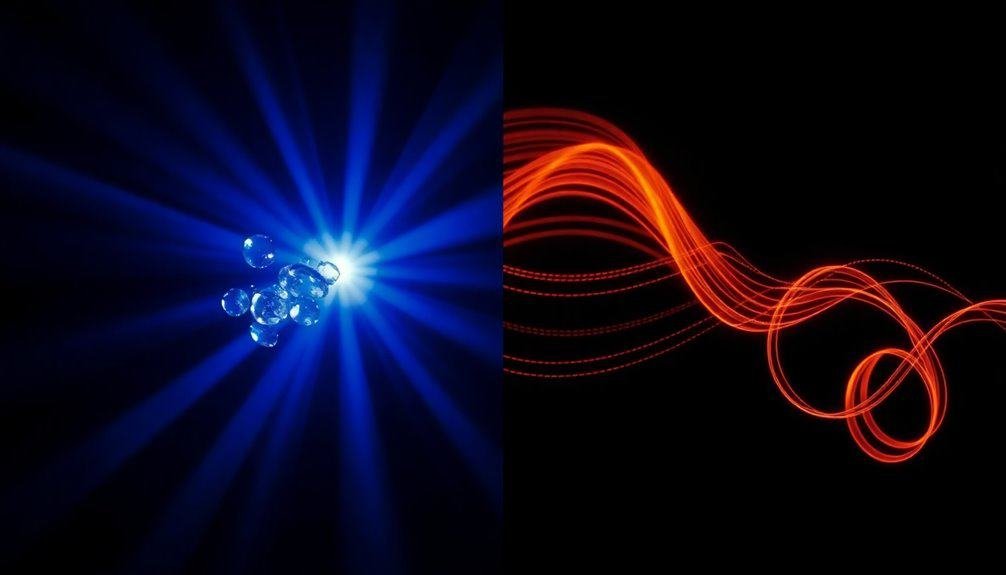
Blue light from digital devices and the sun can disrupt melatonin production, affecting sleep, and may lead to digital eye strain and retinal damage with prolonged exposure. In comparison, electromagnetic fields (EMF) from electronic devices can cause oxidative stress, fatigue, and headaches.
Both blue light and EMF impact vulnerable groups differently, necessitating an understanding of their distinct mechanisms. Effective exposure management requires awareness of their sources and effects.
Disclaimer: As an affiliate, I may collect a share of sales from the links on this page.
Definition and Sources of Blue Light
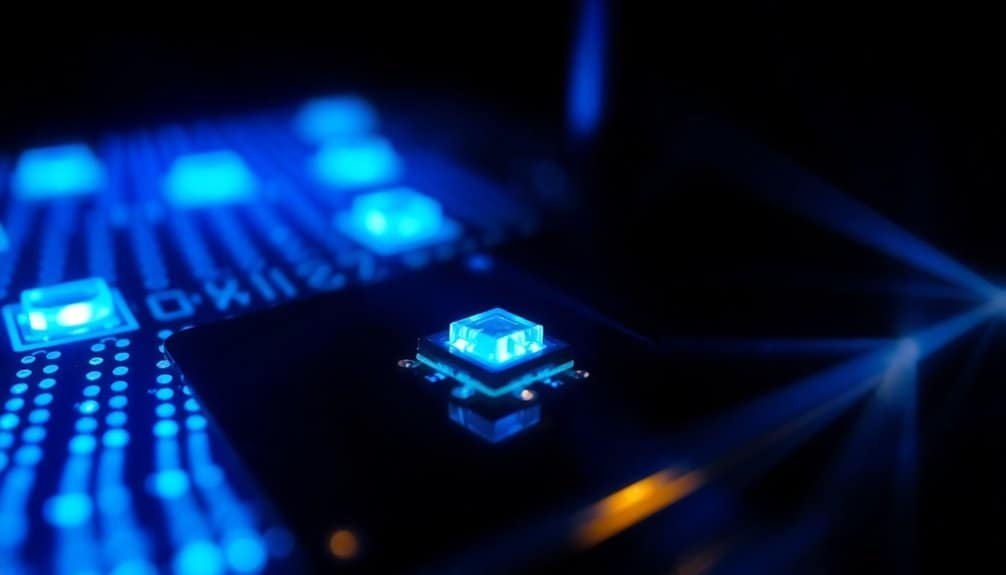
Blue light, defined by its wavelength ranging from 380 to 500 nanometers (nm), is a part of the visible light spectrum. It includes high-energy blue-violet light (380 to 450 nm) and blue-turquoise light (450 to 500 nm).
The sun serves as the primary natural source of blue light. Additionally, digital devices like smartphones, tablets, and computers emit significant amounts of blue light.
LED lighting and modern televisions also contribute to your blue light exposure. This high-energy visible light plays an essential role in various technologies while impacting visibility and energy perception in daily life. Increased exposure due to screens has become more prevalent since the COVID-19 pandemic.
Health Effects of Blue Light
Health Effects of Blue Light
The impacts of blue light on health encompass various biological and physiological effects that warrant attention. Prolonged exposure can disrupt your circadian rhythm by suppressing melatonin production, negatively impacting sleep. It is well-known that disruption of circadian rhythms leads to sleep issues and may contribute to serious conditions like cancer, diabetes, and heart disease, affecting overall well-being. Blue light can also cause digital eye strain, leading to discomfort and fatigue. Additionally, it boosts alertness and cognitive functions, which may improve daytime productivity. Chronic exposure alters mitochondrial function, impairing cellular energy production, and increases the risk of retinal damage. Understanding these effects helps you manage blue light exposure for better health outcomes.
Vulnerable Groups Affected by Blue Light

Certain populations are particularly susceptible to the adverse effects of blue light exposure. You should be aware of these vulnerable groups:
- Children: Their developing eyes have limited blue light defenses.
- Elderly: Especially those with eye diseases or pseudophakic conditions.
- Individuals with eye diseases: Conditions like cataracts or age-related macular degeneration increase risk.
- Professional populations: Jobs with high blue light exposure, like pilots and night shift workers, face greater challenges. It is essential to note that long-term exposure to blue light may cause oxidative stress and inflammation, making these groups even more vulnerable.
Understanding these groups can guide protective measures and encourage appropriate action to mitigate blue light’s effects on sensitive individuals.
Health monitoring is critical for at-risk populations.
Definition and Sources of EMF
Electromagnetic fields (EMF) represent an intricate combination of electric and magnetic forces produced by moving charges. These fields exert forces on electric charges and currents, affecting their behavior.
EMF is classified as non-ionizing radiation, meaning it generally lacks the energy to break chemical bonds. You encounter EMF from various sources. Natural sources include Earth’s magnetic field and solar radiation, while human-made sources range from power lines to household appliances and communication devices like mobile phones. Understanding these sources is essential, as you’re continuously exposed to a mix of natural and artificial EMFs in your environment. Additionally, natural EMFs consist of cosmic microwaves and infrared light, contributing to the overall electromagnetic landscape.
Health Effects of EMF
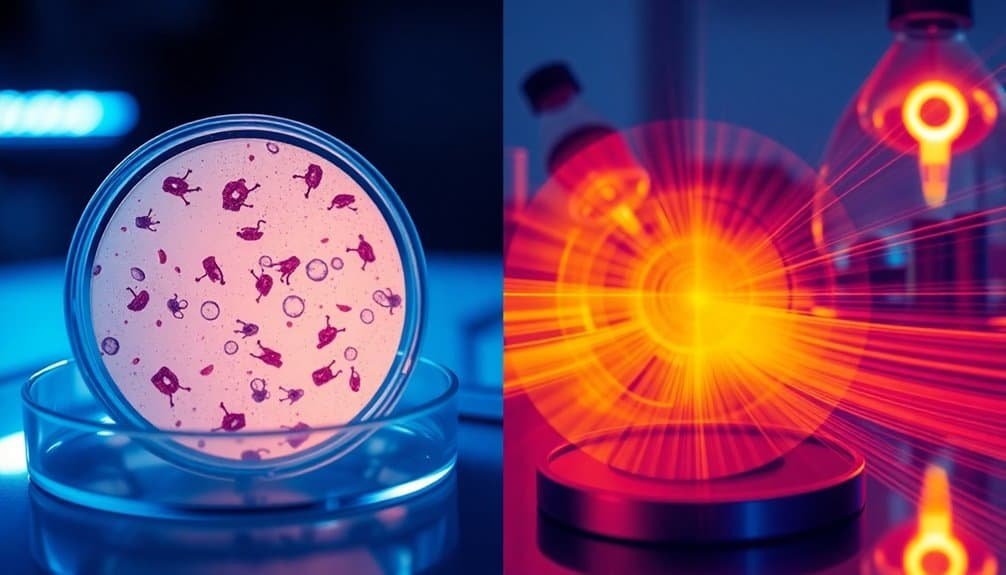
As you explore the potential health effects of electromagnetic fields (EMF), it’s crucial to recognize that exposure can produce a range of biological responses.
Here are some key points to reflect on:
- EMF exposure triggers oxidative stress in various tissues.
- Significant changes in blood antioxidant markers have been observed.
- Reported symptoms include fatigue, headache, decreased learning ability, and cognitive impairment.
- While biological effects occur, they don’t necessarily indicate health hazards.
While ongoing research is necessary, the focus remains on understanding possible risks associated with EMF exposure and identifying effective protective measures for individuals. Additionally, long-term exposure to EMF has been linked to potential health issues such as chronic conditions and fatigue.
Vulnerable Groups Affected by EMF
Individuals in specific demographics may experience heightened risks associated with EMF exposure, emphasizing the need for awareness and precaution.
Children are particularly vulnerable, with potential links to childhood leukemia at elevated exposure levels.
Pregnant individuals currently see no strong evidence linking EMF to adverse outcomes, yet research remains inconclusive.
The elderly face increased cumulative exposure over a lifetime, suggesting possible long-term effects, particularly in neurodegenerative diseases.
Ultimately, individuals with chronic health conditions could be at risk for oxidative stress and autonomic dysregulation.
Understanding these vulnerabilities is essential for minimizing health risks related to electromagnetic fields. Additionally, newborns are especially at risk due to their rapidly developing bodies and brains, making it crucial to implement effective EMF protection strategies.
Recommendations for Minimizing Exposure to Blue Light
Minimizing exposure to blue light is essential for maintaining eye health and supporting a healthy sleep cycle. Here are some effective recommendations:
- Use blue-blocking glasses: These glasses filter blue light, reducing eye strain and promoting better sleep.
- Install blue light filter apps: Apps can adjust your screen’s color temperature, particularly useful during evening use.
- Adjust screen settings: Activate night mode or warm color settings to lessen blue light emissions.
- Limit screen time before bed: Try to avoid screens two to three hours before sleep to prevent disruptions in your sleep cycle.
Recommendations for Minimizing EMF Exposure
Reducing exposure to electromagnetic fields (EMFs) has gained attention as more devices permeate daily life. To minimize your exposure, maintain distance from EMF sources like smartphones and Wi-Fi routers.
Consider using wired connections instead of wireless whenever possible. Implementing shielding materials in your home can also reduce exposure.
At work, guarantee compliance with safety standards and use protective equipment where applicable. Opt for devices with lower EMF emissions, and arrange your workspace ergonomically.
Educate yourself on potential risks and stay informed, as ongoing research is examining long-term health effects from cumulative EMF exposure across various populations.
Frequently Asked Questions
How Does Blue Light Exposure Affect Productivity Levels?
Blue light exposure boosts your productivity by enhancing alertness, improving concentration, and increasing cognitive performance. You’ll find tasks easier and require less mental effort, making your work environment more efficient and effective throughout the day.
Can Blue Light Filtering Glasses Improve Sleep Quality?
Studies show up to 59% of people experience sleep issues linked to blue light. While blue light filtering glasses might help improve sleep quality for some, results are mixed, so your effectiveness can vary considerably.
Are There Any Benefits to Exposure to Blue Light?
Yes, exposure to blue light can boost your alertness, enhance cognitive functions, and improve memory. Daytime exposure helps regulate your circadian rhythm, promoting better sleep quality while also offering benefits for certain skin conditions.
Does Wine Consumption Affect Sensitivity to EMF Exposure?
Wine consumption doesn’t directly affect your sensitivity to EMF exposure, but the antioxidants in wine might help mitigate oxidative stress, offering potential health benefits. Moderation is key for maximizing these effects. Enjoy responsibly!
How Can I Reset My Circadian Rhythm After Blue Light Exposure?
To reset your circadian rhythm after blue light exposure, try getting morning sunlight, avoiding screens before bedtime, keeping a consistent sleep schedule, and using blue light filtering glasses to minimize evening disruptions.
Conclusion
Understanding the differences between blue light and EMF is crucial for making informed health decisions. Blue light can disrupt sleep patterns, while EMF may affect cellular function. Vulnerable groups, like children and those with pre-existing conditions, might be more susceptible to these effects. Implementing strategies like limiting screen time and using shielding devices can help protect your health. Prioritizing prevention through mindful management can significantly impact your daily life.



